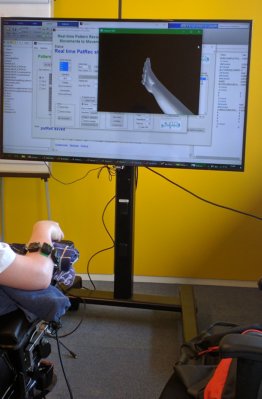
Duchenne muscular dystrophy (DMD) is an X chromosome-linked recessive neuromuscular disease, affecting mainly males and it is the most common and severe form of muscular Dystrophy. It is diagnosed in childhood and it affects approximately 1:5000 births. The population of people with DMD in the Netherlands was 420 at 2013. People with DMD suffer from progressive muscle weakness which leads to physical disability, high dependency from care-givers and shortened life expectancy.
Due to advances in health care over the past few years, life expectancy has been gradually increased and currently people with DMD reach the fourth decade. While their lifespan has increased, their upper extremity function remains limited, especially after the age of ten. People with DMD may live with impaired hand function for decades . Thus, unable to perform basic activities of daily living (ADL). People with DMD can greatly benefit from active assistive devices.
To address this problem various projects started in the Netherlands, under the Flextension umbrella and in collaboration with the Duchenne Parent Project. We develop and test various techniques for the intention detection of people with DMD and their integration with active upper extremity assistive devices. We aim to translate these technologies to the users and that is why we aim for user centered developments both for the design of devices and the intention detection. We are also interested in the study of the hand function in general and especially in people with DMD.
Selected publications:
K. Nizamis, A. Ayvaz, N.H. Rijken, B. Koopman, M. Sartori. Real-time myoelectric control of wrist/hand motion in Duchenne muscular dystrophy: A case study. Frontiers in Robotics and AI., 2023.
